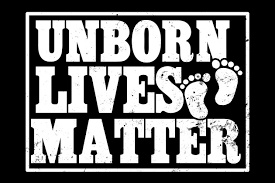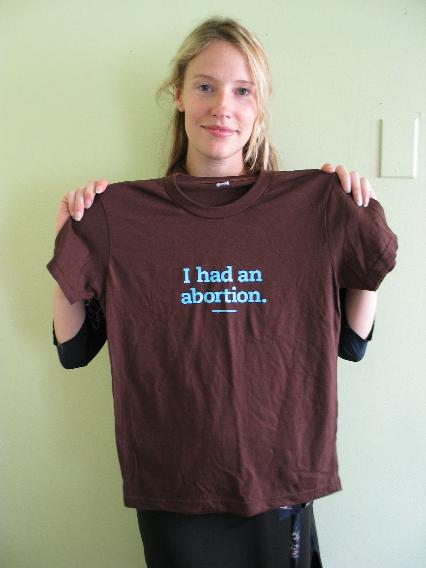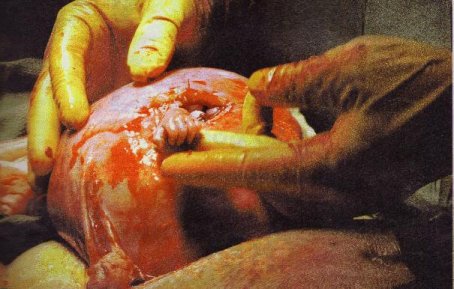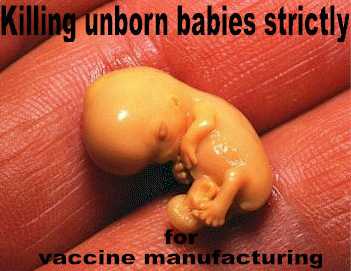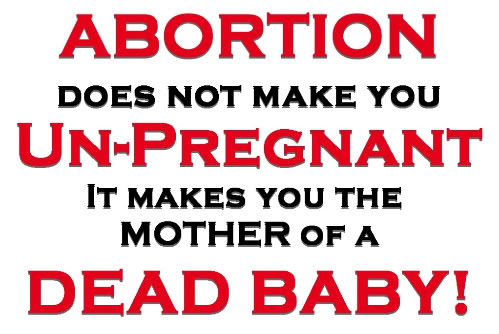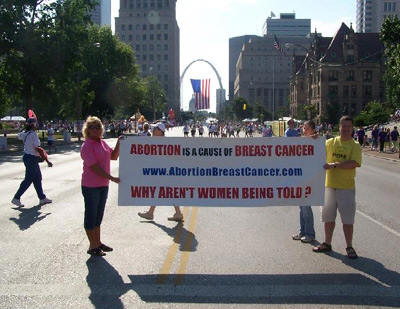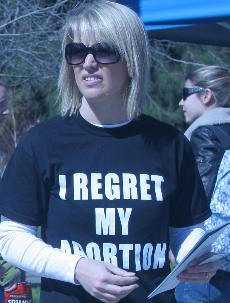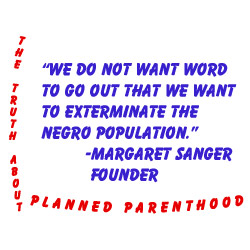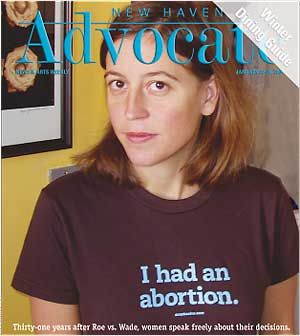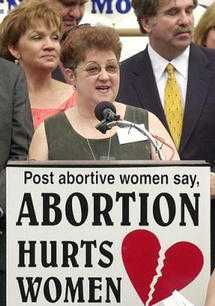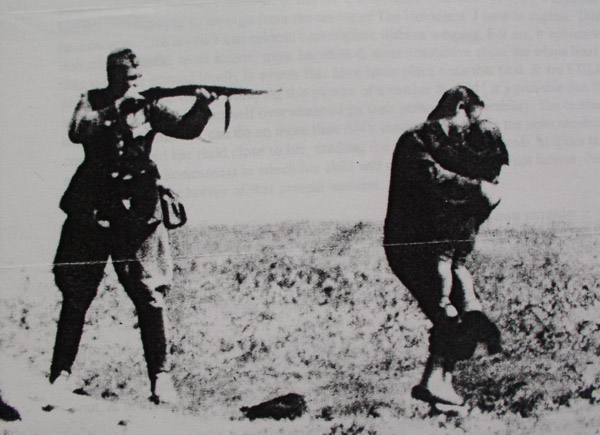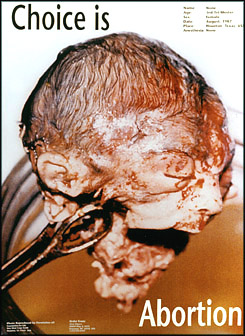“And I will punish the world for their evil, and the wicked for their iniquity; and I will cause the arrogancy of the proud to cease, and will lay low the haughtiness of the terrible.” —Isaiah 13:11
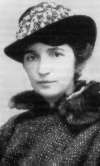 The principal manifestations of eugenics are racism and abortion. Eugenics
is the driving force behind euthanasia, in vitro fertilization, and embryo
and fetal research. It is the driving force in global population policy, and
affects American foreign policy. It is the force driving much of the
environmentalist movement, welfare policy and welfare reform, and health
care. It is found in anthropology, sociology, psychology all the social
sciences. Further, it is reflected in much literature, especially science
fiction. So it is worth some study.
The principal manifestations of eugenics are racism and abortion. Eugenics
is the driving force behind euthanasia, in vitro fertilization, and embryo
and fetal research. It is the driving force in global population policy, and
affects American foreign policy. It is the force driving much of the
environmentalist movement, welfare policy and welfare reform, and health
care. It is found in anthropology, sociology, psychology all the social
sciences. Further, it is reflected in much literature, especially science
fiction. So it is worth some study.
DEFINITION
Eugenics is the study of methods to improve the human race by controlling reproduction. The word was coined in 1883 by Francis Galton, a cousin of Charles Darwin. Galton believed that the proper evolution of the human race was thwarted by philanthropic outreach to the poor when such efforts encouraged them to bear more children. Charity upset the mechanism of natural selection. Hence, the human race needed a kind of artificial selection: eugenics. The word is from Greek for good birth. Galton wanted eugenics to develop from a science to a policy to a religion.
A Study ...
Galton defined eugenics as "the science of improvement of the human race germ plasm through better breeding." He also said: "Eugenics is the study of agencies under social control that may improve or impair the racial qualities of future generations, whether physically or mentally." This definition was used for years on the cover of the Eugenics Review, a journal published by the Eugenics Education Society.
A Program ...
The American Journal of Eugenics (1906) defined it as "the science of good generation" and noted that the Century Dictionary defined it (rather primly) as "the doctrine of Progress, or Evolution, especially in the human race, through improved conditions in the relations of the sexes."
In 1970, I. I. Gottesman, a director of the American Eugenics Society, defined it in this way: "The essence of evolution is natural selection; the essence of eugenics is the replacement of 'natural' selection by conscious, premeditated, or artificial selection in the hope of speeding up the evolution of 'desirable' characteristics and the elimination of undesirable ones."
A Religion ...
Eugenics has had a religious dimension. Galton suggested that it should function as a religion, and this proposal was echoed by George Bernard Shaw, Bertrand Russel and others. In the United States shortly after the turn of the century, the American Journal of Eugenics advertised itself by noting that it was "formerly known as Lucifer the Light Bearer."
A pungent assertion of the religious character of eugenics comes from Julian Huxley, the first Director-General of UNESCO and a member of the English Eugenics Society : "We must face the fact that now, in this year of grace, the great majority of human beings are substandard: they are undernourished, or ill, or condemned to a ceaseless struggle for bare existence; they are imprisoned in ignorance or superstition. ... We must see to it that life is no longer a hell paved with unrealized opportunity.... In this light, the highest and most sacred duty of man is seen as the proper utilization of the untapped resources of human beings."
Huxley continued, "I find myself inevitably driven to use the language of religion. For the fact is that all this does add up to something in the nature of a religion: perhaps one might call it Evolutionary Humanism. The word religion is often used restrictively to mean belief in gods; but I am not using it in this sense ... I am using it in a broader sense, to denote an overall relation between man and his destiny, and one involving his deepest feelings, including his sense of what is sacred. In this broad sense, evolutionary humanism, it seems to me, is capable of becoming the germ of a new religion, not necessarily supplanting existing religions but supplementing them."
The Population Council, one of the new eugenic organizations that emerged after World War II, no longer spoke of eugenics as a religion (in fact, avoided the word eugenics altogether), but launched "studies relating to the social, ethical and moral dimensions" of population studies, recognizing that these questions involve matters "of a cultural, moral and spiritual nature." The new field of bioethics is a response to issues raised by eugenics. Bioethics is based on situation ethics, which was developed largely by Joseph Fletcher, a member of the American Eugenics Society.
In a recent book, the confusion over the term is discussed by Diane B. Paul, who notes that some definitions describe it as a science or a study, but that study alone would not have aroused grave concerns; the word must also refer to social policy. That is, the word refers not only to the methods to improve the human race, but also the deliberate intent to improve. She also notes that some people use the word to refer to the consequences of an action, regardless of intent. She does not allude to the religious or even ethical content of eugenics.
HISTORY OF EUGENICS
In 1798, an English clergyman and economist named Thomas Robert Malthus published the Essay on the Principle of Population. The central idea of the book is that population increases exponentially and will therefore eventually outstrip food supply. If parents failed to limit the size of their families, then war or famine would kill off the excess. The idea has been remarkably resilient, although the specific predictions that Malthus made were wrong. Malthus argued that the island of Britain could not sustain a population of 20 million, but 150 years later the population was more than triple Malthus' ceiling.
Charles Darwin, the biologist, was immensely impressed by Malthus' ideas, and the Malthusian theories are embedded in Darwin's theory of evolution and natural selection (The Origin of Species, 1859, and the Descent of Man, 1871). But after Darwin borrowed ideas from economics and inserted them into biology, his cousin reversed the process and discovered ideas in biology that could be applied to humans. This is one of the first tricks that amateur magicians learn, like "finding" a coin in a child's ear. The amazing thing about Galton's stunt is that it has fooled so many people for so long.
At least one contemporary understood what Galton was doing. Friedrich Engels, a collaborator with Karl Marx, was contemptuous of the way Malthus' ideas about economics were inserted into biology and then retrieved as gospel: "The whole Darwinist teaching of the struggle for existence is simply a transference from society to living nature of Hobbes' doctrine of bellum omnium contra omnes and of the bourgeois doctrine of competition together with Malthus' theory of population. When this conjurer's trick has been performed ... the same theories are transferred back again from organic nature into history and it is now claimed that their validity as eternal laws of human society has been proved. The puerility of this proceeding is so obvious that not a word need be said about it."
It is noteworthy that this ideology of arrogance proved to be appealing on the right (Galton), then the left (British Socialists), then the right (German National Socialists), then the left (American environmentalists), then the right (see The Bell Curve debate). Galton's work is still used today. He used statistical methods, including the now-famous "bell curve," to describe the distribution of intelligence within a population. He devised various methods for measuring intelligence, and concluded that Europeans are smarter than Africans, on average. And he suggested systematic studies of twins to distinguish the effects of heredity from the effects of environment.
Galton's work was carried on, especially at the University of London, where he endowed a Chair of Eugenics. According to eugenics scholar J. Philippe Rushton, Galton's work was carried on especially by: Karl Pearson and Charles Spearman, then by Cyril Burt, and in our time by Raymond Cattell, Hans Eysenck and Arthur Jensen. However, these academics were carrying on work that was built specifically on Galton's theories. The eugenics ideology spread far beyond this core of true believers.
EUGENIC SOCIETIES
In 1904, Galton endowed a research chair in eugenics at University College, London University. In Germany in 1905, Dr. Alfred Ploetz and Dr. Ernst R6din founded the Gesellschaft f6r Rassenhygiene, or Society of Race-Hygiene.
In 1907 in England, the Eugenic Education Society (later the Eugenics Society) was founded.
In 1910, the Eugenic Record Office (ERO) was founded in the United States. The ERO had a different emphasis from the Birth Control League which sought "fewer children for laboring classes." The ERO felt that "ultimate economic betterment should be sought by breeding better people, not fewer of the existing sort."
The First International Eugenics Congress was held at London University in 1912. Although representatives came from a number of nations, the congress revealed the strength of the movement especially in England, Germany and the United States.
In October 1916, Margaret Sanger opened the first birth control clinic in the United States. Several months later, she founded the Birth Control Review. She and her co-workers incorporated the American Birth Control League in 1922. (The organization was renamed the Birth Control Federation of Americain 1939, and in 1942 was renamed the Planned Parenthood Federation of America.) She wrote: "Birth control is thus the entering wedge for the Eugenic educator ... the unbalance between the birth rate of the 'unfit' and the 'fit' is admittedly the greatest present menace to civilization ... The most urgent problem today is how to limit and discourage the overfertility of the mentally and physically defective."
In 1922, the American Eugenics Society was founded. Founders included: Madison Grant, Henry H. Laughlin, Irving Fisher, Fairfield Osborn, and Henry Crampton. Grant was the author of The Passing of the Great Race (1916) and wrote the preface to The Rising Tide of Color Against White World Supremacy. Laughlin was the Superintendent of the Eugenics Record Office from 1910 to 1921; he was later President of the Pioneer Fund, a white supremacist organization that is still functioning today. Fisher, who taught economics and political economy and economics at Yale University for 40 years, said that the purpose of the society was to "stem the tide of threatened race degeneracy" and to protect the United States against "indiscriminate immigration, criminal degenerates, and race suicide." Fairfield Osborn was the president of the American Museum of Natural History from 1908 to 1933; he wrote about evolution in From the Greeks to Darwin. In 1923, during a national debate on restricting immigration, Osborn spoke enthusiastically about the results of intelligence testing carried out by the Army: "I believe those tests were worth what the war [World War I] cost, even in human life, if they served to show clearly to our people the lack of intelligence in our country, and the degrees of intelligence in different races who are coming to us, in a way which no one can say is the result of prejudice. ... We have learned once and for all that the negro is not like us."
This list of organizations is far from exhaustive. The point here is simply that eugenics in the first part of the 20th century was not an academic exercise. Eugenicists were organizing, particularly in Germany, England and the United States, to implement policies consistent with their theories. The work of the eugenicists included: racism and white supremacy, promoting birth control among the dysgenic, restricting immigration, sterilizing the handicapped, promoting euthanasia, and seeking for ways to increase the number of genetically well-endowed individuals.
HITLER'S EMBRACE
A key program of the eugenicists was cleansing the human race by sterilizing the "unfit." By 1931, sterilization laws had been enacted in 27 states in the United States, and by 1935 sterilization laws had been enacted in Norway, Sweden, Denmark, Switzerland and Germany. But the efficiency of the German eugenicists caused trouble.
Galton's ideas had been taken up in Germany by Friedrich Nietzsche in the 19th century. Then Ploetz and R6din laid the foundations of an effective eugenics program in Germany. In 1922, two men, a lawyer and a psychiatrist, Karl Binding, J. D., and Alfred Hoche, M.D. cooperated on a short book entitled Die Freigabe der Vernichtung lebensunwerten Lebens (Permission to Destroy Life Devoid of Value). The book encouraged Austrian physicians who were beginning to practice euthanasia illegally. And then Adolf Hitler, who had described his own eugenic ideas in Mein Kampf, came to power.
Hitler's determination to establish his "Master Race" was embraced by German eugenicists. And eugenicists elsewhere failed to criticize the Germans. In the United States, the Birth Control Review praised the effectiveness of the Germans, and published articles by R6din and others.
In the United States today, there is a great deal of confusion about Hitler's view of abortion. Pro-lifers denounce abortionists furiously for imitating Hitler, who legalized abortion, and proponents of abortion denounce pro-lifers furiously for imitating Hitler, who outlawed abortion. In fact, both sides are half right. Hitler was a eugenicist, and he outlawed aborting Aryan babies for eugenic reasons, but encouraged aborting Slavs and Jews also for eugenic reasons.
After Hitler had killed millions of people, including one third of the Jews in the world, he lost the war. The name of his political party became and remains one of the most offensive words in the language, and ideas that are tightly associated with him are universally condemned. So the idea of building a master race became extremely unpopular. However, the eugenics movement did not die.
EUGENICS AFTER WORLD WAR II
Most people have never heard of eugenics, and most of those who have heard of it think it died with Hitler. Of the few people who are aware that eugenics was still a force after World War II, many believe that its remnants were reformed. In fact, the eugenics movement continued to thrive, without reform. The development and promotion of birth control was a major eugenic success. The discovery of the population explosion and the hysteria about the need to control it was a major eugenic success. The field of genetics grew faster than fruit flies in the 1950s, and although the accumulating knowledge was valuable, the field was dominated by eugenicists, who could use their knowledge for eugenic purposes. UNESCO, founded in 1948, was directed by Julian Huxley, a determined eugenicist who used his global platform very effectively. The welfare state in Britain was based largely of the work of Richard Titmuss, John Maynard Keynes and William Henry Beveridge, members of the Eugenics Society.
Historians who rely too heavily on the eugenicists themselves will overlook a great deal. Daniel Kevles, for example, makes the post-war eugenics movement sound like a group of dusty academics. But one of their activities in Britain beginning in the 1960s was running a flourishing abortion business. Beginning in the 1960s, a few members of the Eugenics Society built and controlled almost the entire private abortion industry. Whether you think abortion is killing a child or exercising a fundamental liberty, this bloody and emotional activity is not the work of dusty academics: at least some of the eugenicists were activists.
The influence on the eugenicists on abortion in America is perhaps best seen by comparing Roe v. Wade and a book by Professor Glanville Williams, The Sanctity of Life and the Criminal Law. The book is cited repeatedly in the 1973 abortion decision, but the numerous citations do not reveal the full extent of the influence. Justice Blackmun lifted his whole argument from Williams, including the history of abortion, ancient attitudes, the influence of Christianity, common law, Augustine's and Aquinas' teaching, canon law and English statutory law. And Williams was a member of the Eugenics Society. Roe v. Wade was based on eugenics.
CRYPTO-EUGENICS
In 1968, the Eugenics Review ran an article summarizing some of the activities of the Eugenics Society. The article quoted a proposal made by in the late 1950s by Dr. Carlos Paton Blacker, who had been an officer in the Eugenics Society since 1931 (Secretary, then General Secretary, then Director, then Chairman):
"That the Society should pursue eugenic ends by less obvious means, that is by a policy of crypto-eugenics, which was apparently proving successful in the US Eugenics Society."
In 1960, Blacker's proposal was adopted by the Eugenics Society. A resolution which was accepted stated (in part):
"The Society's activities in crypto-eugenics should be pursued vigorously, and specifically that the Society should increase its monetary support of the FPA [Family Planning Association, the English branch of Planned Parenthood] and the IPPF [International Planned Parenthood Federation] and should make contact with the Society for the Study of Human Biology, which already has a strong and active membership, to find out if any relevant projects are contemplated with which the Eugenics Society could assist."
At the time this resolution was adopted by the Eugenics Society, Blacker was the Administrative Chairman of IPPF. When IPPF was founded in 1952, it was housed in the offices of the Eugenics Society.
The dominant figure in the eugenics movement in the United States, considered by the English to be a model of crypto-eugenics, was Major General Frederick Osborn, a master propagandist. In 1956, he said people "won't accept the idea that they are in general, second rate. We must rely on other motivation." He called the new motivation "a system of voluntary unconscious selection." The way to persuade people to exercise this voluntary unconscious selection was to appeal to the idea of "wanted" children. Osborn said, "Let's base our proposals on the desirability of having children born in homes where they will get affectionate and responsible care." In this way, the eugenics movement "will move at last towards the high goal which Galton set for it."
Osborn stated the public relations problem bluntly: "Eugenic goals are most likely to be attained under a name other than eugenics." He pointed to genetic counseling as a prime example: "Heredity clinics are the first eugenic proposals that have been adopted in a practical form and accepted by the public. ... The word eugenics is not associated with them."
Osborn is often credited with reforming the eugenics movement after World War II, and purging the racism. However, during the time of this reform, he was President of the Pioneer Fund, holding that office secretly from 1947 to 1956. The Pioneer Fund is a notorious white supremacist organization. Obviously, a secret racist wouldn't purge racism; he would purge open racism, leaving a policy that critics might call "crypto-racism."
In 1960, a member of the Eugenics Society, Reginald Ruggles Gates, founded a new periodical to advance racist ideas. The Advisory Council of the new journal, Mankind Quarterly, included yet another member of the Darwin family, Charles Galton Darwin. One idea advanced in the journal is the belief that anthropology, if it is understood honestly, shows that mankind is divided into four species. The first issue stated that desegregation happened because "American anthropologists were responsible for introducing equalitarianism into anthropology, ignoring the hereditary differences between races, ...until the uninstructed public were gradually misled. Equality of opportunity, which everyone supports, was replaced by a doctrine of genetic and social equality, which is something quite different."
Even in Germany, the eugenics movement did not die out. The most offensive example of its resurgence after Hitler was the rehabilitation of Professor Dr. Otmar Freiherr von Verschuer.
In 1935, von Verschuer said that he was "responsible for ensuring that the care of genes and race, which Germany is leading worldwide, has such a strong base that it will withstand any attacks from outside." In 1937, he was Director of the Third Reich Institute for Heredity, Biology and Racial Purity.
Von Verschuer was Josef Mengele's mentor before the Nazi holocaust, and his collaborator during the holocaust. Mengele's horrific experiments at Auschwitz have put his name alongside those of Hitler and Eichmann. And yet, a few years after the war, von Verschuer founded the Institute of Human Genetics in Munster, where he worked educating another generation until his death in 1969. He had not turned away from his old ideas: was an adviser for the Mankind Quarterly, and a member of the American Eugenics Society.
The rehabilitation of Mengele's mentor and collaborator was not an accidental oversight. Eugenicists in America were aware of von Verschuer; several stories about him appeared in English in the Eugenical News in the 1930's. The first, a review of his book Erbpathologie, said: "Race culture, the selection of proposed cases for sterilization or marriage advice [i.e., genetic counseling] are impossible without the earnest collaboration of the entire medical profession ... In this book the author clearly outlines the duties of the physician to the nation. The word 'nation' no longer means a number of citizens living within certain boundaries, but a biological entity. This point of view also changes the obligation of the physician ... Dr. von Verschuer has successfully bridged the gap between medical practice and theoretic scientific research."
Another article about von Verschuer appeared in the Eugenical News May/June 1936. This article specifically mentions that von Verschuer intended to use twin studies to test a racist idea (the race doctrine of Count Gobineau). Mengele's horrors at Auschwitz were twin studies. There was a follow-up article in October 1937.
THE SHIFT TO GENETICS
Before the war, the American Eugenics Society laid out its research aims, including many investigations in sociology, psychology, anthropology and biology. But they noted especially the important new fields: population study and genetics.
After the war, research in genetics was led by one of the German eugenicist besides von Verschuer who had continued his work, Dr. Franz J. Kallmann. He had been "associated with Dr. Ernst R6din, investigating in genetic psychiatry." He was half Jewish, so he was driven out of Germany in 1936 by Hitler. Nonetheless, he testified on behalf of von Verschuer after the war. Kallmann taught psychiatry at Columbia, and in 1948 he founded the American Society of Human Genetics. He became a member of the American Eugenics Society. This Society developed hundreds of prenatal tests but did not look for cures, although every test was hyped as a potential lead towards a cure.
Over the next years, at least 124 people were members of both Kallmann's American Society of Human Genetics and the American Eugenics Society. The overwhelming evidence of a commitment to eugenics at the American Society of Human Genetics is especially troubling when you note that members of this society promoted, developed and now lead the multi-billion dollar Human Genome Project.
Negative eugenics, or ending the over-production of the "unfit," is obviously well underway with widespread contraception, sterilization and abortion. But positive eugenics, or the increased production of the "fit," can be advanced through artificial insemination, in vitro fertilization and genetic engineering. The Human Genome Project would certainly help in a scheme of positive eugenics.
SECOND NEW FIELD: POPULATION CONTROL
After World War II, the eugenics movement discovered (or invented) the population explosion, and whipped up global hysteria about it. From 1952 on, a major part of the eugenics movement was the population control movement. The population explosion made it possible for eugenics movement to continue its work more from the fit, less from the unfit with the same people to do the same things, but with a new public rationale.
The transformation from open eugenics to population planning is described well by Germaine Greer: "It now seems strange that men who had been conspicuous in the eugenics movement were able to move quite painlessly into the population establishment at the highest level, but if we reflect that the paymasters were the same Ford, Mellon, Du Pont, Standard Oil, Rockefeller and Shell are still the same, we can only assume that people like Kingsley Davis, Frank W. Notestein, C. C. Little, E. A. Ross, the Osborns Frederick and Fairfield, Philip M. Hauser, Alan Guttmacher and Sheldon Segal were being rewarded for past services." That is, the population control movement was the same money, the same leaders, the same activities with a new excuse.
One of the organizations that promoted eugenics under the new population rubric was the Population Council. It was founded in 1952 by John D. Rockefeller 3rd, and spent $173,621,654 in its first 25 years. That is not a bad budget for one of the organizations in a dead movement! Clearly, the people who think the eugenics movement died in the rubble in Berlin do not understand crypto-eugenics, genetics or population control!
The extent of the population control movement is hard to imagine, and harder to exaggerate. During the past 25 years, there have been approximately 1.5 billion surgical abortions globally. The United Nations Population Fund has sponsored three meetings bringing together the heads of state from most of the world to develop a global population strategy, in Bucharest in 1974, Mexico City in 1984, and in Cairo in 1994. No other global problem has been the occasion for meetings comparable to these three. The World Bank, the U.S. Agency for International Development, and governmental agencies from nearly all the industrialized nations have contributed billions of dollars to campaigns designed to decrease population growth.
The population control movement has not been noted for respect for human rights. In 1972, for example, essays by members of the American Eugenics Society appeared in Readings in Population. Kingsley Davis explained the need for genetic control, and examined the obstacles, including a widespread attachment to the ideal of family life. But he saw some hope of developing a more effective program of improving the human race, although improvement would be slow:
"Under the circumstances, we shall probably struggle along with small measures at a time, with the remote possibility that these may eventually evolve into a genetic control system. ... The morality of specific techniques of applied genetics artificial insemination, selective sterilization, ovular transplantation, eugenic abortion, genetic record keeping, genetic testing will be thunderously debated in theological and Marxian terms dating from ages past. Possibly, within half a century or so, this may add up to a comprehensive program."
What he wanted, though was "the deliberate alteration of the species for sociological purposes," which would be "a more fateful step than any previously taken by mankind. ... When man has conquered his own biological evolution he will have laid the basis for conquering everything else. The universe will be his, at last."
In the same book, Philip M. Hauser, also a member of the American Eugenics Society, explained the difference between family planning, which relies on the voluntary decisions of individuals or couples, and population control, which would include abortion, a commitment to zero population growth, coercion, euthanasia and restrictions on international migration.
Perhaps the clearest example of the power of the eugenics movement today is in China, with its one-child-only family policy. This policy is an assault on prenatal life and on women's privacy, both. The program was described and praised in 16 articles in a remarkable issue of IPPF's quarterly journal, People, in 1989, on the eve of the massacre in Tiananmen Square. But this anti-life, anti-choice policy is not unique to China; most of the nations of Asia have some coercive elements in their population policies.
The coercive Chinese policy has a great deal of acceptance and support in the United States, including from feminist leaders like Eleanor Smeal and Molly Yard. When the Reagan administration cut off funds for the United Nations Population Fund (UNFPA) because of its support for the Chinese population program, two American organizations sued to restore funds: Rockefeller's Population Council and the Population Institute in Washington. A 1978 survey of members of the Population Association of America found that 34 percent of members agreed that "coercive birth control programs should be initiated in at least some countries immediately."
In fact, the United States government is responsible for much of the global population control. In 1976, a formal definition of national security interests, NSSM 200, described the major threats to the United States. Some of these are obvious. The first, of course, was Communism in Europe, with the military charged with principal responsibility for defending American national security from this threat. In the Pacific, the threat was the possibility of losing bases; the military was charged with the principal responsibility for defending this national interest.
In Latin America, there was the threat of incipient Communism; the CIA had principal responsibility for our defense. In Africa, according to the American government in 1976 and ever since, the threat to American national security interests is population growth. The Agency for International Development was given the responsibility of defending America from this grave threat. This document was classified until 1992; when it was de-classified, the Information project for Africa distributed it, and the covert depopulation policy tucked into the American foreign aid program caused a great deal of resentment.
CURRENT DEVELOPMENT
In late 1994, the publication of The Bell Curve made the word "eugenics" known again. The research quoted in the book is drawn overwhelmingly from members of the American Eugenics Society and other eugenic groups. Curiously, most commentators focused on one chapter in the lengthy book, and debated whether it was racist. The conclusion of the book is that men are not equal, and that the Declaration of Independence is badly worded. This lengthy restatement of eugenics was on the bestseller list for weeks.
The book was generally praised by conservatives (see The National Review, December 5, 1994, an issue devoted to The Bell Curve) and attacked by liberals (see The New Republic, October 31, 1994, which included a lengthy defense of the book by its authors and 21 critical or hostile responses).
SYSTEMATIC RESPONSE
One excellent way to understand the eugenics movement in our time is to read through a list of the members of the Eugenics Society and its successor, the Society for the Study of Social Biology. Eugenics is not a conspiracy, it is a movement and an ideology. But the pieces of it are often considered in isolation, perhaps because of the success of the strategy of crypto-eugenics. Reading through the list of members helps to see the whole picture. (A list of members of the American Eugenics Society, with notes, is available from American Life League.)
In 1925, John Thomas Scopes was charged with teaching evolution in a public school in Tennessee, in violation of state law. The trial became a highly visible confrontation between Fundamentalist views of Scripture and the theory of evolution. Shaping the debate this way allowed the proponents of evolution to score a tremendous public relations victory. Nonetheless, the questions, then and now, are theological and moral, not just scientific. Darwin and the evolutionists and eugenicists had indeed precipitated a religious crisis, and were debating the existence of God and the meaning of human life.
From the beginning, the great obstacle to the eugenics movement has been the Roman Catholic Church, and the Church's position has been repeatedly distorted. A sketch of the Church's position can be found in:
Gaudium et Spes or The Church in the Modern World the Vatican II document explaining to all people of good will why the Church wants to be involved in discussions of the problems facing the world and what she thinks she offers; Humanae Vitae Pope Paul VI's letter on human life, best known for his re-statement of the Church's unwavering assertion that contraception is objectively and cannot be made moral, but also contains a sharp warning about the threat of coercive population control; Populorum Progressio Pope Paul VI's powerful letter on development, urging the wealthy nations to help the poor generously, and calling development the "new name for peace"; Laborem Exercens Pope John Paul II's letter on work, offering a radically new approach to the place of work in the life of an individual and a society; and Familiaris Consortio Pope John Paul II's letter on family life, best known for re-stating opposition to contraception, but defends the rights of families, including the right to migrate in search of a better economic life; Sollicitudo Rei Socialis one of Pope John Paul II's letters on the crises facing the modern world, stating that the measure of a social program is its impact on the dignity of the individual, and stating that the route to freedom from social evil is solidarity with the victims of the evil.
The social sciences in our time are thoroughly imbued with eugenic theory. It would be a noble work to rescue them, to work through the basic texts and theories of each field, identifying the eugenic taint and replacing it with an unswerving devotion to the dignity of the individual, including the poor.
John Cavanaugh-O'Keefe
January, 1995
* * * * * * *
Bibliography
History of Eugenics
Adams, Mark, ed. The Wellborn Science: Eugenics in Germany, France, Brazil and Russia (New York, Oxford: Oxford University Press, 1990)
Bajema, Carl L., ed. Eugenics, Then and Now (Stroudsburg,: Hutchinson & Ross, 1976)
Baker-Benfield, G. J. The Horrors of the Half-Known Life: Male Attitudes Toward Women and Sexuality in Nineteenth Century America (New York: Harper Colophon, 1976
Bigelow, Maurice A. "Brief History of the American Eugenics Society," Eugenic News, 31 (1946): 49-51.
Chase, Allen. The Legacy of Malthus: The Social Costs of the New Scientific Racism (New York: Alfred A. Knopf, 1977).
Degler, Carl N. In Search of Human Nature: The Decline and Revival of Darwinism in American Social Thought (New York: Oxford University Press, 1991)
Haller, Mark H. Eugenics: Hereditarian Attitudes in American Thought (New Brunswick: Rutgers University Press, 1963)
Kevles, Daniel J. In the Name of Eugenics: Genetics and the Uses of Human Heredity (Berkeley and Los Angeles: University of California Press, 1986)
Kuhl, Stefan. The Nazi Connection, (New York, Oxford: Oxford University Press, 1994)
Lifton, Robert. The Nazi Doctors: Medical Killing and the Psychology of Genocide (New York: Basic Books, 1986)
Ludmerer, Kenneth M. Genetics and American Society (Baltimore and London: Johns Hopkins University Press, 1972)
Mehler, Barry. "A History of the American Eugenics Society, 1921-1940," dissertation, University of Illinois, 1988.
Pernick, Martin S. The Black Stork: Eugenics and the Death of Defective Babies in American Medicine and Motion Pictures since 1915 (New York: Oxford University Press, 1992)
Pickens, Donald K. Eugenics and the Progressives (Nashville: Vanderbilt University Press, 1968)
Rosenberg, Charles E. No Other Gods: On Science and American Social Thought (Baltimore: Johns Hopkins University Press, 1976)
Shapiro, Thomas M. Population Control Politics: Women, Sterilization and Reproductive Choice(Philadelphia: Temple University Press, 1985)
Stepan, Nancy. The Idea of Race in Science: Great Britain 1800-1960 (London: Macmillan, 1982), The Hour of Eugenics: Race, Gender and Nation in Latin America (Ithaca: Cornell University Press, 1991)
Trombley, Stephen. The Right to Reproduce: A History of Coercive Sterilization (London:Weidenfeld & Nicolson, 1988)
Weinreich, Max. Hitler's Professors: The Part of Scholarship in Germany's Crimes Against the Jewish People (New York: Yiddish Scientific Institute, 1946)
Weiss, Sheila F. Race Hygiene and National Efficiency: The Eugenics of Wilhelm Schallmayer (Berkeley, Los Angeles, London: University of California Press, 1987)
Reproductive Technology
Corea, G., The Mother Machine (New York: Harper and Row, 1985)
Congregation for the Doctrine of the Faith, Instruction on Respect for Human Life in Its Origins and on the Dignity of Procreation (Vatican City: 1987)
De Marco, Don, Biotechnology and the Assault on Parenthood (San Francisco: Ignatius Press, 1991)
Fletcher, Joseph, Morals and Medicine (Boston: Bacon Press, 1960)
Frank, Diana, and Vogel, Marta, The Baby Makers (New York: Carroll & Graf, 1988)
Howard, Ted, and Rifkin, Jeremy, Who Should Play God? (New York: Dell Publishing, 1987)
Lejeune, Jerome; Ramsey, Paul; and Wright, Gerard, The Question of In Vitro Fertilization (London: SPUC Educational Trust, 1984)
McLaughlin, Loretta, The Pill, John Rock, and the Church (Boston: Little,Brown and Co, 1982)
Rini, Suzanne M. Beyond Abortion: A Chronicle of Fetal Experimentation (Rockford, IL: Tan Books, 1988)
U.S. Congress, Office of Technology Assessment, Infertility: Medical and Social Choices (Washington: U.S. Government Printing Office, 1988)
Population Control
Aird, John S., Slaughter of the Innocents: Coercive Birth Control in China (Washington: AEI Press, 1990)
Greer, Germaine, Sex and Destiny (New York: Harper & Row, 1984)
Hartmann, Betsy, Reproductive Rights and Wrongs (New York: Harper & Row, 1987)
Information Project for Africa, Population Control and National Security (Washington, 1991). IPFA has four other studies that have also been used by opponents of population imperialism throughout the developing world.
Fiction
H. G. Wells and Isaac Asimov were eugenicists, and much science fiction follows their lead. It is, therefore, good to know there is some excellent science fiction that challenges eugenics:
Huxley, Aldous, Brave New World
Lewis, C.S., That Hideous Strength
Miller, Walter M., A Canticle for Liebowitz (New York: Bantam Books, 1969)
Percy, Walker, The Thanatos Syndrome (New York: Farrar, Straus, Giroux, 1987)
Recent Eugenic Theory
Gore, Al, Earth in the Balance (Boston, New York and London: Houghton Mifflin, 1992)
Herrnstein, Richard J. and Murray, Charles, The Bell Curve (New York: Free Press, 1994)
Odom, Guy R., Mothers, Leadership, and Success (Houston: Polybius Press, 1990)
Rushton, J. Philippe, Race, Evolution, and Behavior (New Brunswick, NJ: Transaction Publishers, 1995)



